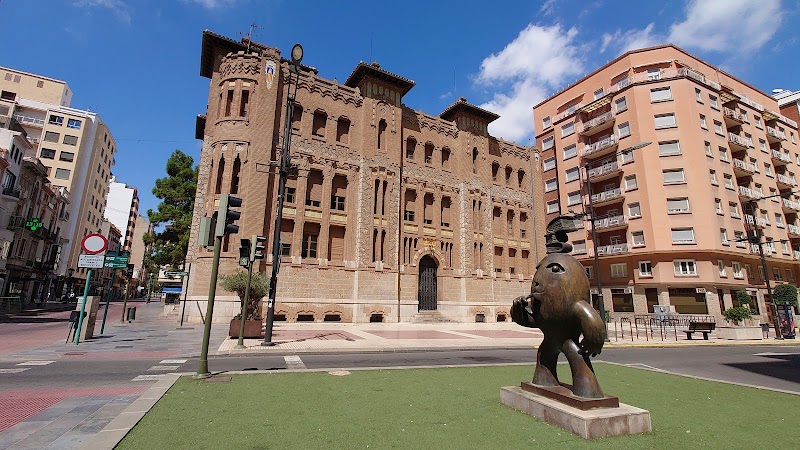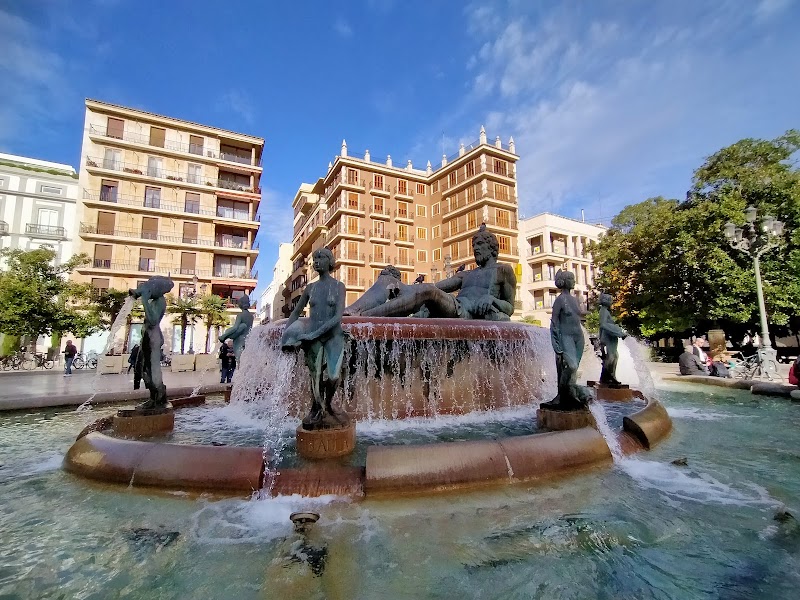Discover the Valencian Community
Welcome to the Valencian Community, a captivating region in Eastern Spain. Here, your senses are awakened by the collision of modernity and history. With over 300 days of sunshine a year, the region is known for its stunning beaches, historical treasures, delectable cuisine, and outdoor adventures. Make your journey unforgettable with our in-depth Tourist Map of Valencian Community . Also, enhance your Spanish adventure with our comprehensive Tourist Map of Spain.
Your Personal Tourist Map of Valencian Community
Our handy Tourist Map of the Valencian Community is your personal guide to this mesmerizing region. With detailed layers marking cities, monuments, museums, towns, beaches, and tourist activities, this digital map is your constant companion on your mobile devices as you explore the Valencian Community.
How to Make the Most of the Map to Visit Valencian Community
Our interactive tourist map of Valencian Community is more than a navigation tool. It's a personal tour consultant, offering you a comprehensive view of the entire region. You can plan your itinerary, highlight points of interest, and uncover hidden gems. If your travels take you further, consider using our Tourist Map of Andalusia.
Experiencing the Valencian Community: A Blend of Sun, Sand, and History
Iconic Places and Their Cultural Significance
The Valencian Community is a treasure trove of iconic landmarks. Visit the region's capital, Valencia, to explore the ultra-modern City of Arts and Sciences and the medieval Cathedral and the Serranos Towers. Southward, Alicante awaits with its majestic Santa Barbara Castle and the coastal town of Jávea offers panoramic views from the Cabo de la Nao lighthouse. Enhance your Valencia visit with our comprehensive Tourist Map of Valencia.
Unique and Authentic Experiences
From sampling authentic Valencian paella in Albufera to wine tasting in Utiel-Requena and witnessing the magical fallas festival in Valencia, the Valencian Community offers a wealth of unique experiences that make for a memorable journey.
Connections Between Points of Interest
Our map helps you discover the interconnections between different points of interest, linking the bustling plazas of Valencia with tranquil beaches of Costa Blanca and the ancient Roman remains of Sagunto with the modernist architecture of Alcoy.
Practical Information to Enhance Your Visit
For each point of interest, our map provides practical information such as optimal visiting times, estimated visit duration, and local tips. Whether you're exploring Alicante's dynamic nightlife or spending an afternoon at Albufera Natural Park, you're equipped with the necessary information to optimize your visit.
As you embark on your journey through the Valencian Community, remember that this region is not just a collection of destinations. It is a tapestry of experiences, where every city, beach, and monument tell a unique story. With our interactive tourist map, you're ready to uncover these stories and create your own unforgettable memories.

Practical Tips for Navigating the Valencian Community
Beach-Hopping in the Valencian Community
The Valencian Community is a paradise for beach lovers. Enjoy the pristine sands of Alicante's Playa de San Juan in the lively summer months (June - August) or explore the tranquil beaches of Jávea or Denia in the quieter months (September - May). Our map will guide you to the best beaches for each season.
Exploring Historical Monuments
Visit Valencia's Cathedral and the Santa Barbara Castle in Alicante, and don't miss the ancient Roman theatre and castle in Sagunto and the ancient cave paintings in La Valltorta. Our map provides detailed information about each site, helping you immerse yourself in Spain's rich history.
Navigating the Culinary Landscape
The Valencian Community boasts diverse gastronomic delights, from traditional paellas to innovative fusion cuisine. Visit the Central Market in Valencia, where you can sample local produce, meats, and cheeses. Wine lovers will enjoy a visit to the wineries in Utiel-Requena, offering tours and tastings from 10 am to 6 pm. Our interactive map includes a 'food and drink' layer, guiding you to the regional culinary highlights.

Frequently Asked Questions (FAQs)
1. What are some key historical attractions to visit in the Valencian Community?
In Valencia, don't miss the La Lonja de la Seda, a UNESCO World Heritage site, and the Serranos Towers, remnants of the ancient city wall. Alicante's Santa Barbara Castle and the ancient Roman theatre in Sagunto are must-visit sites for history enthusiasts.
2. Can you recommend some unique local experiences in the Valencian Community?
Experiencing Las Fallas, a traditional celebration held in Valencia in commemoration of Saint Joseph, is a once-in-a-lifetime experience. Savoring a traditional paella in the Albufera Natural Park or enjoying a wine tasting tour in Utiel-Requena will immerse you in local culture.
3. Which beaches should I visit in the Valencian Community?
The region is renowned for its beautiful beaches. Popular choices include La Malvarrosa and El Saler in Valencia, San Juan and Postiguet in Alicante, and Les Marines and Les Deveses in Denia. For a more tranquil experience, try the secluded coves of Moraira or the pristine sands of Oliva.
4. What's the best way to get around within the Valencian Community?
The region is well connected by public transportation, including trains, buses, and trams. Consider renting a car for more flexibility, especially if you plan to explore the coastal areas or the rural interior.
5. Where are the best areas to stay in the Valencian Community?
Valencia city, with its blend of historical charm and modern attractions, offers a wide range of accommodations. Alicante, with its stunning beaches and vibrant nightlife, is another excellent option. For a more tranquil environment, consider the picturesque towns of Denia or Jávea.
6. When is the best time to visit the Valencian Community?
The region boasts a Mediterranean climate, with mild winters and warm summers. Spring (April to June) and fall (September to November) are ideal times to visit, with pleasant temperatures and fewer tourists. However, for local festivals like Las Fallas or beach activities, summer (July to August) is the best time.

